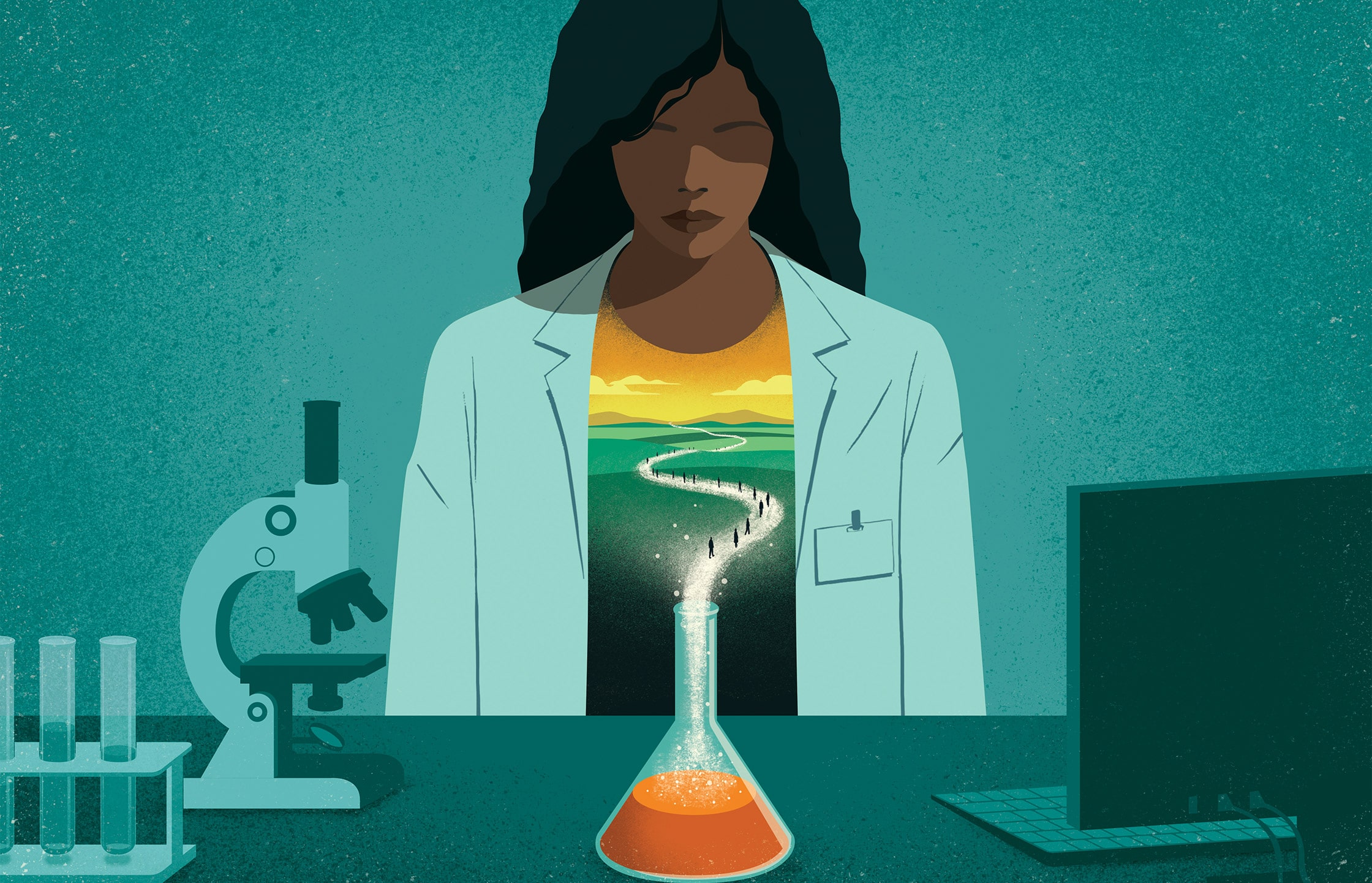Ideas Into Action
The top-down push for racial equality and opportunity — a collaboration of leadership, students, faculty, and staff — will transform the Miller School of Medicine
By Louis Greenstein
Illustrations by Davide Bonazzi
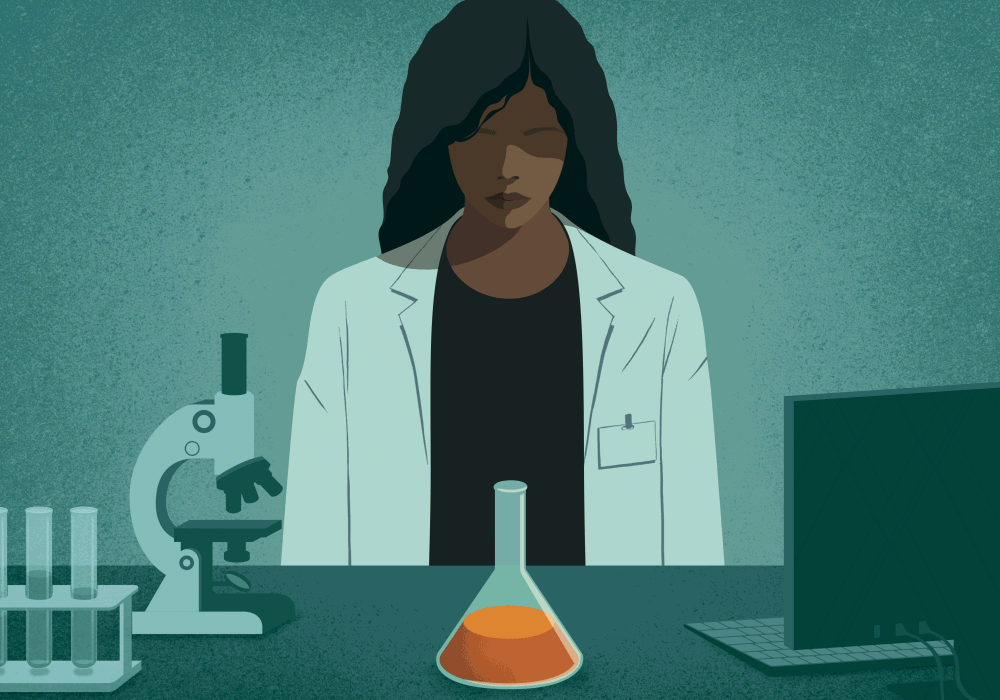
A
s a Latina immigrant, DACA recipient, and first-generation medical student, Pia Iribarren, M.P.H., acknowledges having faced structural barriers throughout her life.
“But even so, I know I’m privileged in many ways, as well,” said the first-year University of Miami Miller School of Medicine student. “On a personal level, it was important for me to take on this challenge to learn more and become a better ally.”
Iribarren was referring to her participation in the Miller School’s 21-Day Social & Racial Justice Challenge, an outgrowth of the Miller School’s Racial Justice Task Force formed last year by Dean Henri R. Ford, M.D., M.H.A. She spoke for many of the participants who had committed to the ambitious, self-directed program run under the auspices of the Dean’s Diversity Council.
The task force worked throughout the spring and summer against a backdrop of Black Lives Matter demonstrations; a rising sense of moral indignation; and a stream of viral videos depicting microaggressions, systemic racism, and the murder of Black people by law enforcement officers. Its seven subcommittees — Admissions, Student Affairs, Curriculum, Faculty Affairs, Residents/Fellowships, Research, and Community Engagement — completed their work in the fall and presented recommendations to Dean Ford. The Dean’s Diversity Council (DDC), comprised of seven action teams and launched on January 29, is charged with moving those recommendations forward, effecting measurable and sustainable change at the Miller School.
One shift from the task force’s subcommittees to the diversity council’s action teams was the appointment of diversity champions to lead them. All department chairs, division chiefs and center directors were asked to nominate a champion from each department.
“From surgery to family medicine, everyone has a seat at the Dean’s Diversity Council,” said Nanette Vega, Ed.D., M.A., assistant professor and assistant dean of the Office of Diversity, Inclusion and Community Engagement. “We didn’t assume that everyone from the task force wanted to continue the work, and we were mindful of the time commitment. The DDC will be the implementation arm for the Task Force on Racial Justice recommendations. Each diversity champion will act as a representative for their department and inform decisions in the interest of the Miller School community.”
A report that won’t end up on a shelf
Reengaging volunteers in the process doesn’t appear to be an issue. After the task force submitted its recommendations to Dean Ford, emails went out to all its task force volunteers asking if they wanted to be a member of the diversity council.
“I checked the first morning afterward,” Dr. Vega said. “More than 100 people in 24 hours. They see that it is a report focused on action that won’t end up on a shelf.”
About half the diversity council served on the task force, and half are new. Under the leadership of Dean Ford, Dr. Vega co-chairs the council with Roderick King, M.D., M.P.H., senior associate dean of diversity, inclusion and community engagement. Then come the diversity champions, who lead the council’s action teams.
The diversity champions have been tasked with creating metrics to track each initiative. Soon, according to Dr. Vega, there will be a dashboard on the landing page of the Miller School website that will provide an at-a-glance view of key performance indicators relevant to the objectives. This dashboard will align the strategies and organization goals with President Julio Frenk’s “Road Map to a New Century,” the University of Miami’s strategic plan.
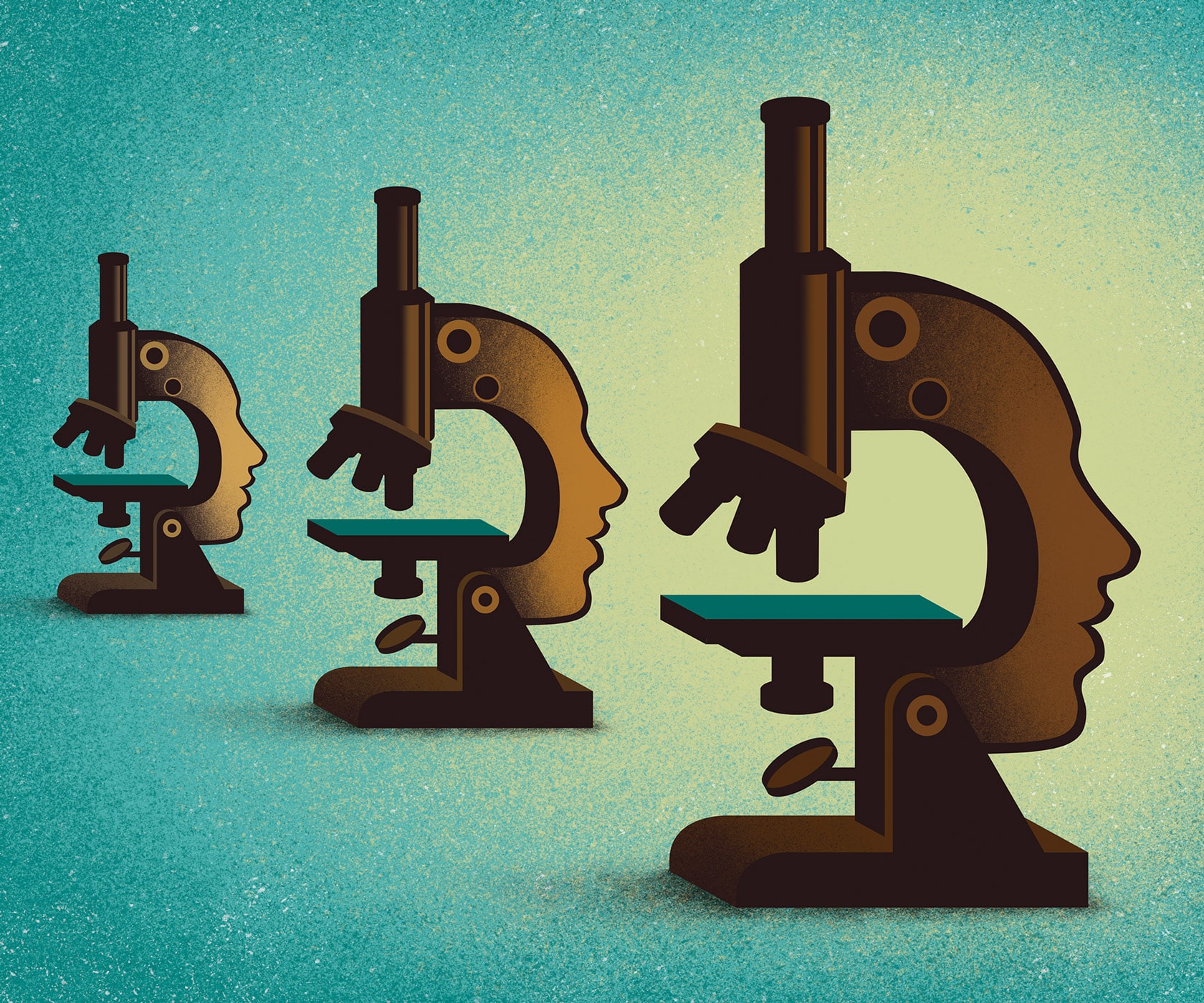
The Dean’s Diversity Council is an academic executive council commissioned by the dean. Anyone who is interested in learning more about the council or participating in the ongoing work, can contact the Office of Diversity, Inclusion and Community Engagement.
The initiatives currently rolling out were already part of the Miller School’s offerings that had high impact, such as the 21-day challenge, Dr. Vega said. She added that moving the initiatives forward is a complex process, requiring resources, both financial and human — a challenge for which the Miller School is prepared.
“We have buy-in — from leadership, the Board of Trustees, the president, and the dean,” she said.
One sobering fact is that there are no Black faculty members in UM’s basic science departments. R. Grace Zhai, Ph.D., professor of molecular cellular pharmacology, is addressing the issue by extending the scope of the DREAM program, a research initiative she was developing before the task force’s creation. Co-chair of the Subcommittee on Research and a diversity champion, Dr. Zhai said the DREAM program is now tied to the diversity council.
According to Dr. Zhai, the idea for DREAM emerged late in 2019, shortly after Dean Ford arrived on campus and announced his vision and commitment to enhancing basic scientific research. Dr. Zhai was tasked with building a program in which medical students could immerse themselves in research for a year.
Addressing the minority pipeline
DREAM provides a scholarship for that extra year of research. Dr. Zhai came up with the acronym: Dean’s Research Excellence Award in Medicine. Last year, while working on the task force, Dr. Zhai and co-chair Carl Schulman, M.D., Ph.D., executive dean for research, realized the potential for DREAM to address the minority pipeline issue.
“What came out of the task force activity is that we geared our structure and advertising toward underrepresented minorities,” she said.
Looking back, Dr. Zhai described the research subcommittee’s discussions as in-depth and often surprising.
“What do we envision as an appropriate composition for the scientist body to look like?” she asked her subcommittee colleagues.
The group looked at two pie charts depicting racial demographics — one at the Miller School and the other from the Miami area. The question was whether the pie charts should look the same. Dr. Zhai described the internal discussions as intense. The Black and Hispanic members argued that the two pie charts should look alike, she said. But a few white male senior faculty members argued that a pie chart for scientists wouldn’t necessarily look like a pie chart of general demographics. If you look at pie charts of sports teams, some minorities would be overly represented, they said.
“The implication that Blacks are overrepresented in sports but that it’s reasonable to expect they are less represented in science offended a lot of the members of the task force,” Dr. Zhai said. Yet, she added, just the fact that the subject was being discussed was significant.
“They don’t usually have the chance to have deep discussions or soul-searching activity with people of color, so this was the opportunity to hear their perspective — and it was really eye-opening,” she said. “I would think that afterward they realized it was something they never thought about before. These moments are hard — they’re really difficult. I was learning, as well.”
Mentoring Black aspiring physicians
There is no shortage of mentorship programs to get high school students into college and college students into medical school. But few such programs exist for medical students and even fewer for medical students of color, many of whom are the first in their family to enter the medical profession.
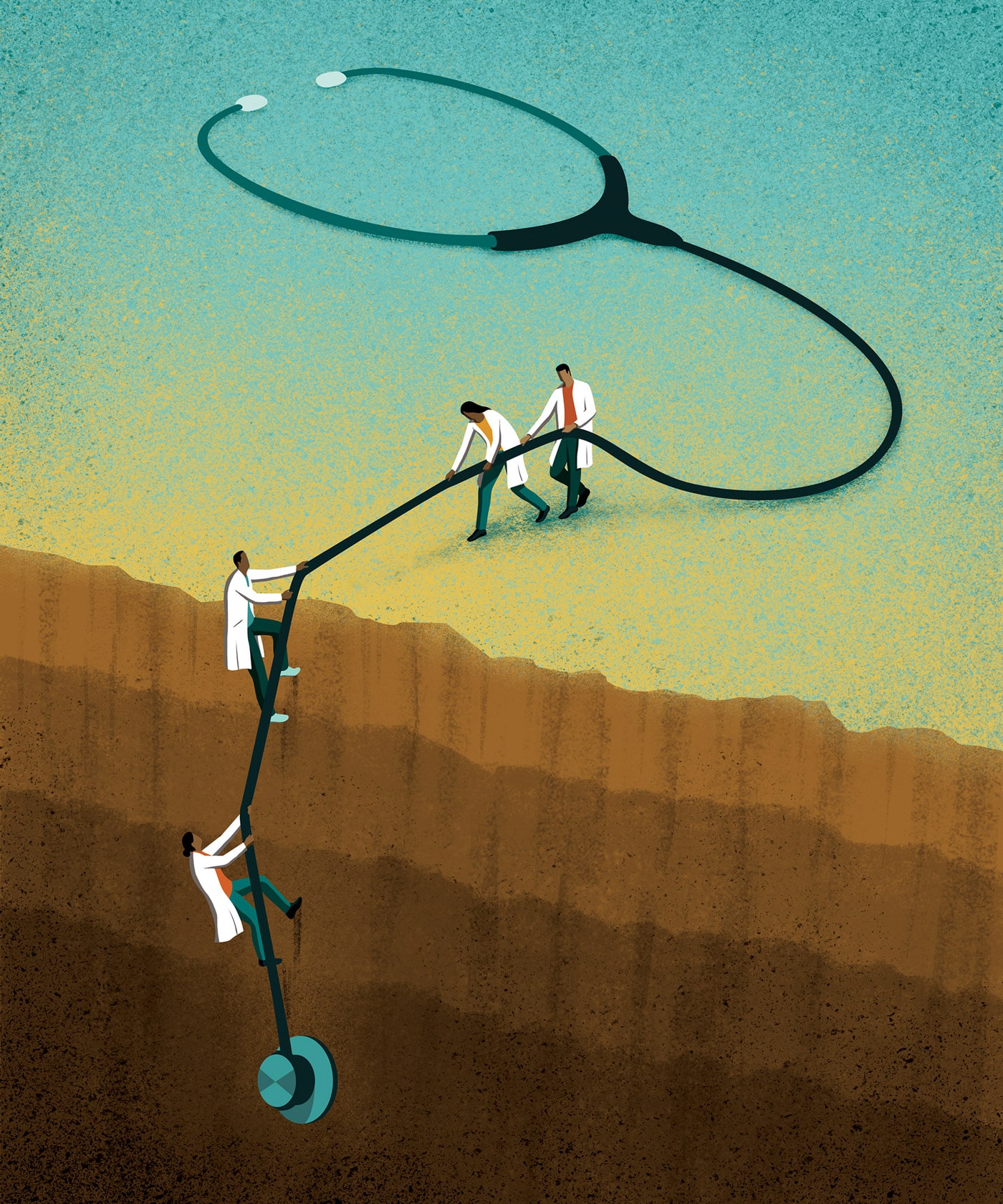
“There are numerous mentorship programs that help pre-meds navigate the challenges of getting into medical school, but we don’t see as many of these programs help students similarly prepare for the challenges of getting into residency,” said second-year medical student Uche Ezeh, who co-founded the Miller School’s Student National Medical Association (SNMA) Mentorship Program with Brea Willey, another second-year medical student.
Laura Martin, D.O., an assistant professor in the Department of Urology, reached out to Ezeh in hopes of identifying medical students of color who were interested in participating in a mentorship program she started for her department. In that program, residents mentor undergraduates, while attending physicians mentor both undergraduates and medical students.
“Our department wanted to get involved with mentorship opportunities for minority students,” Dr. Martin said. “Mentorship offers insight into the process of helping students attain their goals and realize potential that they are not aware of. It gives people a model for being the best person they can be.”
Ezeh expanded this effort to include other departments across the many medical and surgical specialties offered at the university. His vision began after his discussion with Dr. Martin. Ezeh and Willey, with assistance from the Office of Diversity, Inclusion and Community Engagement, were successful in enlisting 26 mentors. The two students have been instrumental in providing opportunities for other medical students by developing a comprehensive mentorship program across the university.
A shortage of mentors
Willey, who served on the task force’s student affairs subcommittee, noted that mentorship programs were a topic of discussion and a subcommittee recommendation.
“I conducted an anonymous survey with third- and fourth-year underrepresented students to see if their experience could have been better,” she said.
Among the responses, a recurring theme was a shortage of mentors.
“A lot of pipeline programs will get you into medical school, but then they stop, leaving underrepresented and first-generation students with little guidance to navigate their medical careers compared to their peers,” Willey said. This is very dire for underrepresented students, as they typically experience more adversities in their careers due to race and implicit bias.”
All of the mentors in the program are practicing UM physicians at UHealth Tower or Jackson Memorial Hospital. Currently, there are 32 mentees.
“We really want mentees to be prepared for the medical workforce and have the tools to research and advocate for their communities and themselves. Therefore, we want to make sure the students are meeting with their mentors at least two times during the semester and are prepared to assist their mentors with any research projects,” Willey said.
This program launched on January 19, and Willey and Ezeh facilitated a “How to Be a Mentee” talk led by the Toppel Career Center on the Coral Gables campus. Additional workshop sessions have included “Getting Started with Literature Reviews” and “Getting Started with Data Resources,” both led by the Calder Library. They are working to establish more workshops and events that revolve around interviewing techniques, resume writing, and surgical suturing.
“We want to increase funding towards our program in order to pay for students to attend research conferences, participate in surgical skills workshops, and help students pay for away rotations during their fourth year of medical school,” Ezeh said.
Like the other initiatives that emerged from the task force, this mentorship program will be data-driven.
Following up to compare outcomes
“We will be using the data to help bolster this program before the next class of students (Class of 2025) arrive in the summer of 2022,” Willey said.
Perhaps most important to Ezeh and Willey is sustainability. They would like the program to continue after they graduate, and they hope to create a network of alumni who came through it as mentees and return as mentors.
“The goal would always be for there to be no need for the diversity initiatives, but it’s going to take some time to level the playing field,” Willey added.
“The biggest goal at the end is for students not to be afraid to apply to a specialty because they don’t see people who look like them in the field,” Ezeh said.
Dr. Vega — who serves as the Greater Miami Chamber of Commerce Leadership Miami inaugural Diversity, Equity and Inclusion Councilperson — first developed a 21-day diversity challenge for chamber of commerce members that included a curated list of articles, book chapters, and videos about racial justice. That challenge also asks participants to journal about race and inclusion as they complete their daily assignments.
Developing better social justice habits
According to Dr. Vega, the chamber’s response was so welcoming that she re-created the program for the Miller School. The challenge is designed to provide a dedicated time and space for developing better social justice habits around race, power, privilege, and leadership. It ends with a conversation facilitated by Dr. Vega, intended to inspire new levels of understanding, relating and action.
The challenge was launched at the Miller School on January 18, Martin Luther King Jr. Day. Representatives from three groups — students, administrators, and faculty — were invited to participate. Pia Iribarren followed the program daily.
“It was important for me to participate because I wanted to become better equipped to talk about topics like race and racism,” she said. “I felt that the challenge would give me tools to better engage in those conversations in a more effective way.”
The challenge’s opening day featured a TEDx talk, “How to Have a Voice and Lean Into Conversations on Race,” by bestselling author Dr. Amanda Kemp. In it, Dr. Kemp spoke about how we need to “hold space for transformational change.”
“She implored us to shift our views on how conversations about race should work and instead realize that it’s ‘not a debate, but instead a journey,’” Iribarren said.
Coming into the challenge, Iribarren described herself as “burdened to fix everything when engaging in conversations about anti-racism.” But Dr. Kemp’s perspective eased that burden, she said. Now she doesn’t see those conversations as be-all-end-all solutions but as steppingstones along the way to achieving racial justice. And Iribarren would like to see more people take the challenge.
“As current or future health professionals, it’s vital that we work toward anti-racism,” she said. “How can we effectively care for our patients if we don’t interrogate our own implicit biases and acknowledge the structural injustices that impact their health?”![]()


